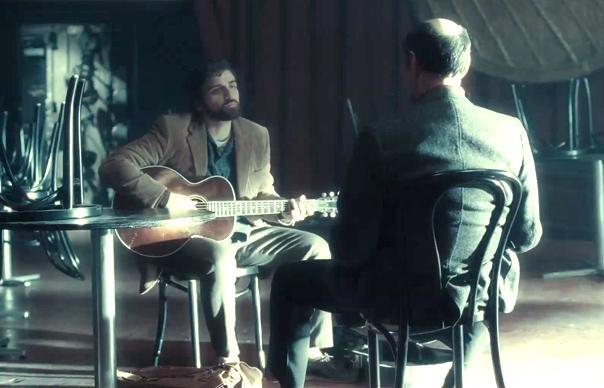With the Coens' new film Hail, Caesar!, due out in March, I thought I'd post my feature on the making of Inside Llewyn Davis; the brothers' yarn about a Greenwich Village folkie in the early 1960s. The piece ran in Uncut issue 200 and includes interviews with Joel and Ethan Coen, along with the the...
The Coens began work on Inside Llewyn Davis three years ago. The writing process, they explain, has remained unchanged now for thirty years. “I don’t know we have a method,” confides Ethan. “We show up at the office. Is that a method? That’s about the extent to which it’s been formalized, asystematised. We show up at the office, and talk, talk a scene through. We do it together. We don’t outline, so we don’t have prospective tasks to divide up. It’s just we start at the beginning and talk the first scene through, write it up, proceed to the next.”
“We have a computer and Ethan does most of the typing,” reveals Joel. “It works like that. It hasn’t changed much since Blood Simple. What was interesting about Llewyn as we were writing him? It was interesting to us the whole notion of somebody who’s not successful at what they do, but not because they’re not good. That was the ambition of the story, or part of what was interesting to us about the character. Tell a story about a musician, specifically we were interested in doing that. And somebody who’s quite good at what he does but isn’t going to be successful in some sort of abstract, amorphous way. Why is that? What are the other reasons?”
As we discover, Llewyn (played by Oscar Isaac) is the remaining half of a semi-successful folk duo who is now trying to make it on his own during an especially harsh winter in Greenwich Village. What goodwill he has among his friends within the folk community seems close to drying up; he has a habit of causing trouble, often with women, and the past is liable to repeat itself, a point the Coens highlight in the film’s elegantly elliptical structure. Llewyn drifts between friends’ sofas, management offices and basement venues. A tabby cat proves a constant frustration. There is purgatorial road trip to Chicago. “We thought of the film as an odyssey that doesn’t go anywhere,” says Ethan.

Among Llewyn’s fellow musicians in the Village, we meet Jim (Justin Timberlake) and Jean (Carey Mulligan), who might just pass for a Peter, Paul and Mary-style trio when they sing with Troy Nelson at the Gaslight. Other characters drift in and out of the movie who bear uncanny similarities to Ramblin’ Jack Elliott, Folkways Records’ boss Moe Asch, entrepreneur Albert Grossman, the Clancy brothers and Jean Ritchie. In one of the film’s most memorable sequences, Llewyn meets a heroin-addicted jazz musician, Roland Turner, played by John Goodman. Meanwhile, to help best present the film’s many songs, the brothers have reunited with T Bone Burnett, their ‘music archivist’ on The Big Lebowski and O Brother, Where Art Thou?.



